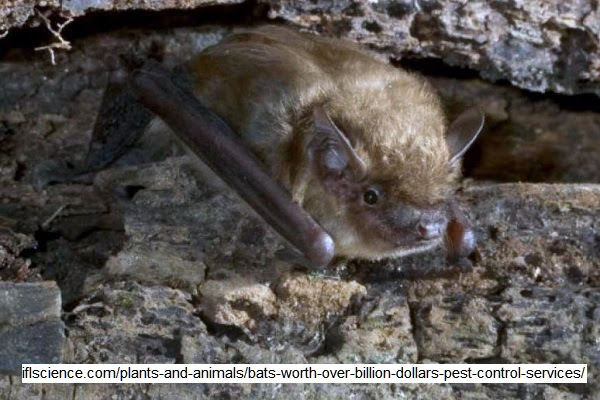Bats Worth Over A Billion Dollars In Pest Control Services
For some they’re the thing of nightmares, but for farmers they provide a crucial service in helping keep crops pest-free. Now, researchers have been able to calculate just how valuable bats are, and worked out the monetary benefit that bats provide by snapping up the insects that feast on fields of corn.
“Bats are voracious predators of insects, including many crop pest species,” says Josiah Maine, who coauthored the paper published in the Proceedings of the National Academy of Science. “My hope was that it would give us a much better idea of the ecological and economic impact of bats in agriculture.” Indeed, they’ve estimated that bats contribute a whopping $1 billion globally to the corn industry alone though pest control services.
In order to examine their impact on growing corn, researchers built netted enclosures around the crops, which were 390 square meters (4,200 square feet), to keep the flying mammals out of test plots. During the day, they were open for the birds and other pest-eating animals to forage, but at night the nets were drawn over to keep the bats out, which allowed insects such as the corn earworm to wreak havoc without the risk of predation. The results were then compared with control plots which were not netted, allowing them to assess the effect that the bats had on pest abundance and crop damage.
“The main pest in my system was the corn earworm, a moth whose larvae cause billions of dollars' worth of damage to corn, cotton, tomatoes, and many other crops,” explained Maine. “The larvae feed on corn ears, causing direct damage to yield, but they also can introduce an avenue for infection of the corn ear by fungi, which produce compounds that are toxic to humans and livestock.”
The results showed an incredible 60% more earworm larvae inside the netted enclosures, which led to over 50% more corn kernel damage. In addition to the reduction in insects, they also found another surprising benefit – the ears of corn also had fewer fungal infections. Overall, they were able to estimate that the bats increase the yield of corn by about 1.4%, which doesn’t sound like much until you realize it adds up to over $1 billion worldwide. And that is just looking at one pest affecting one crop. With the earworm also impacting cotton and soybean, bats are thought to provide an even greater service.
This study highlights the impressive and somewhat surprising impact that the often maligned animals provide to the agricultural industry, and makes the massive decline of insect-eating bats across the eastern United States even more worrying. It’s been estimated that bat populations have declined by about 80% in the northeastern U.S. due to the emergence of white-nose syndrome in 2006. Caused by a fungus, the disease can wipe out entire roosts of hibernating bats, and to the concern of many, has rapidly been spreading west.








sm flipboard insta done
ReplyDelete